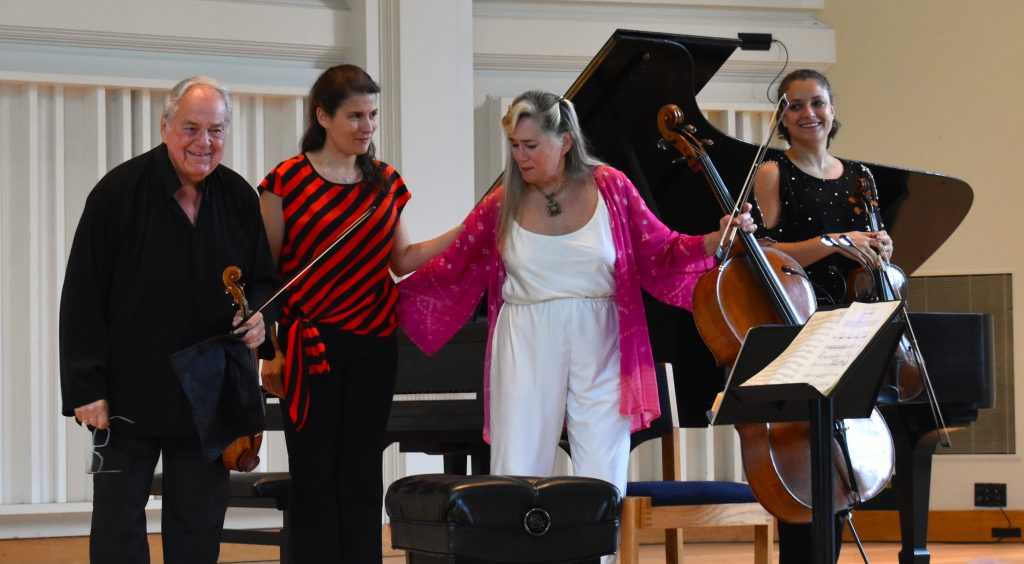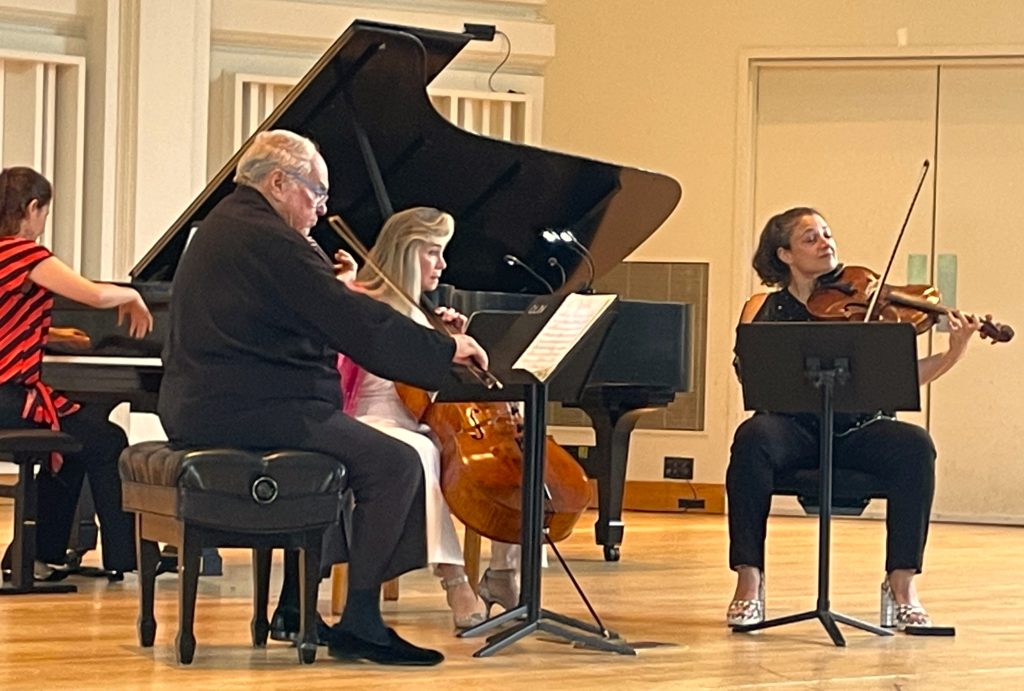
by Kevin T McEneaney
This concert opened with a ten-minute film depicting the storied history of the Hudson Valley Chamber Music Circle Concert series in the Hudson Valley. While Mozart established the genre of the piano quartet, it was his sheet music publisher, Hoffmeister, who suggested the project. Piano trios with violin and cello were quite popular. Since Mozart played both piano and viola (which only appeared in orchestral symphonies at that time), and this novel suggestion would most likely be successful; however, it was not because the piano role was too difficult for aspiring pianists. Piano Quartet No. 1 in G minor, K. 478 opens with a grandiose boast that something new is being presented.
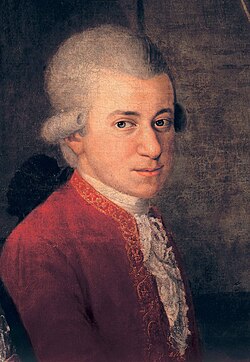
Perhaps I am one of the few who do not take to the opening movement due to the brash piano refrain that repeatedly dominates the opening Allegro movement (which I find to be designed as dramatically symphonic and slightly bombastic). I found the second movement, Andante, more interesting when the genial viola, played by Milena Pájaro-van de Stadt, was twice able to assert itself into suggesting what direction the piano should take as it humbly adopted the viola’s suggestion. In the concluding Rondo, both the violin, played by Jaime Laredo, and the cello, played by Sharon Robinson, offered cheerful new directions, so that all four instruments glowed with amiable agreement as the piano, wonderfully performed with sensitive subtlety by Anna Polonsky, concluded with satisfactory fraternal unity of the Espressivo ensemble!
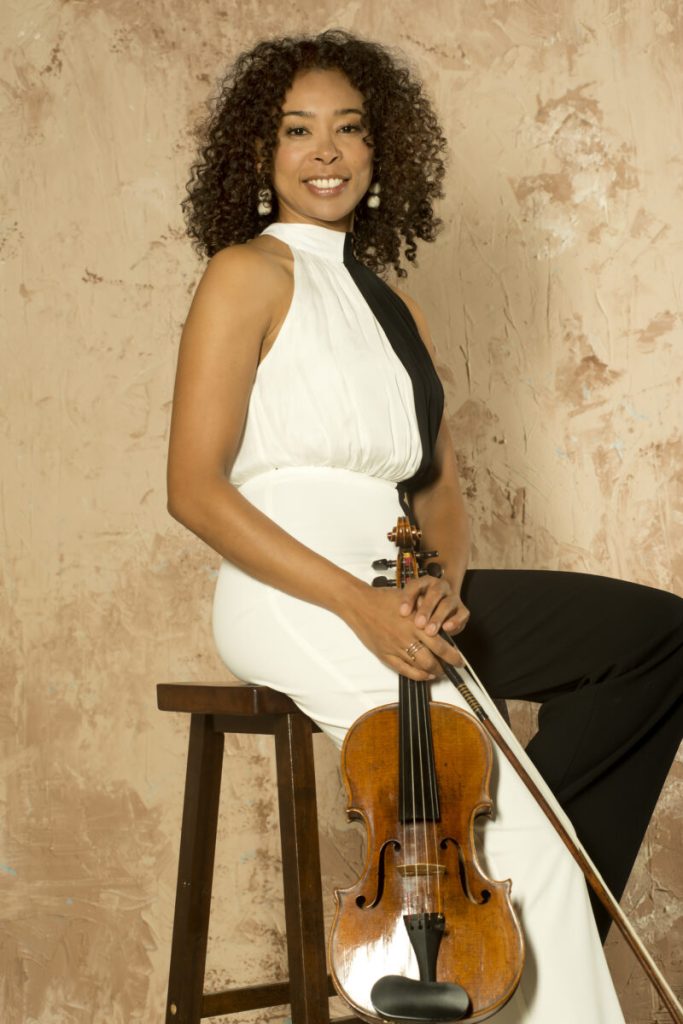
The quartet next performed the premiere of Joy Steppin’ (2024) by Nokuthula Ngwenyama. Her compositions have been performed by leading orchestras and chamber ensembles in North America, Africa, and Asia. This contemporary composition by this young violist and exceptional composer exceeded the promise of its title. The exquisite harmonic interplay of all four instruments delivered an infectious joy, a brilliant tonic for our troubled times. This transcendent work was written for the Espressivo! Quartet. Although there is as yet no recording of this subtle and exuberant masterpiece, I advise anyone interested in contemporary composition to purchase this parcel of heaven when it becomes available!
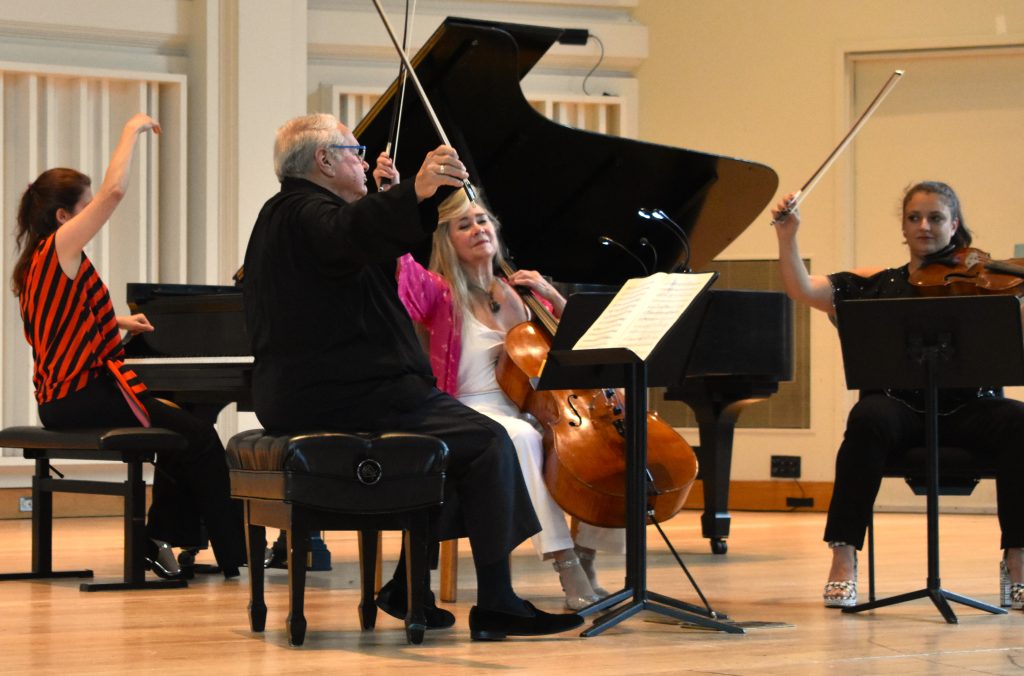
Major composers from Vivaldi and onward (hear Sonata in B-flat major for Cello, RV 47, which recounts affectionate memories of Vivaldi’s father) have at times written memory music about family or friends. Dvořák’s Piano Quartet, Op. 87 is such a work. I remain partial to this particular genre, even when opaque references to people I don’t know puzzle me. I respond to the intimate tonality, whether this corresponds to Brahms, Debussy, or others.
In the first movement, the cello and viola provide the most prominent themes, the cello offering a solid, robust line while the viola appears to offer spontaneous lines that could be explored. Movements appear to smoothly flow with intense melodic appeal. There is a mysterious, grieving Dumka that dramatizes poignant lament with effective pathos from the piano and cello. Happy memories of childhood appear, vagaries of teenage confusion flit by like a breeze. The density, range, and melodic flow offer continuous surprises.
The energetic springing rhythms of the last two movements provide happy delight. The Scherzo features an enchanting string trio, then the piano returns to dominate the fourth final movement with an amazing, brilliant, bravura finale that made me gasp! The see-saw sweep of varied emotions astonishes.
This concert presented the origin of the piano quartet, a midpoint masterpiece, and an astonishing contemporary wonder. In each composition, the viola played an unusually subtle yet prominent role. The Hudson Valley Chamber Music Circle series supports innovative work of the highest quality.
